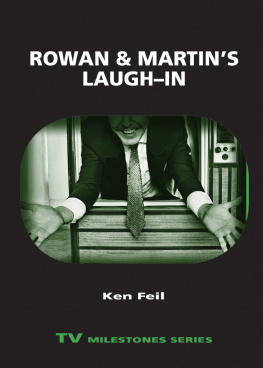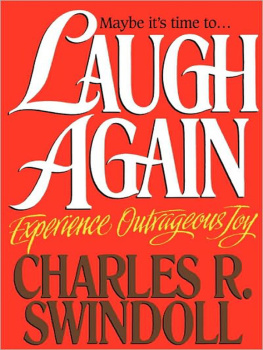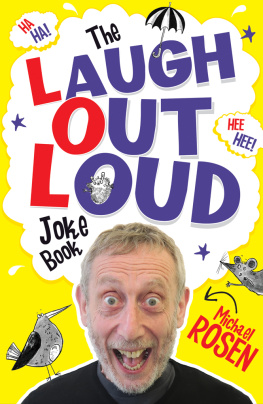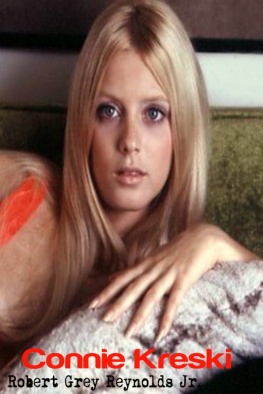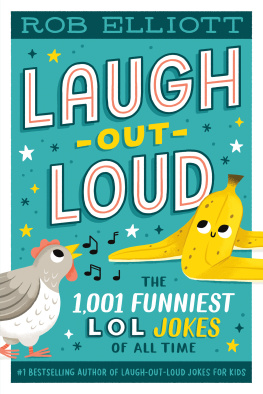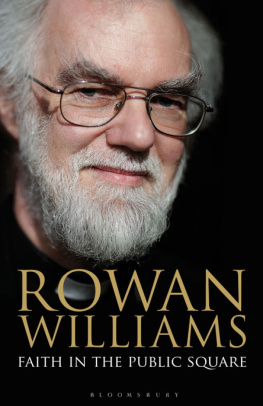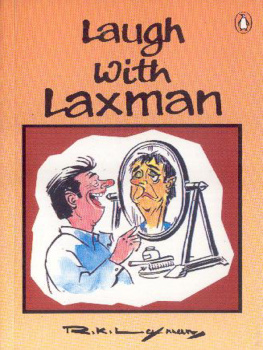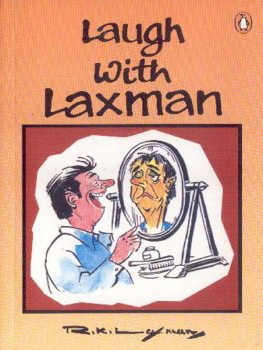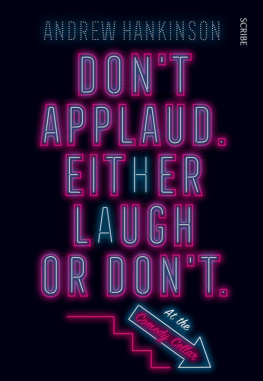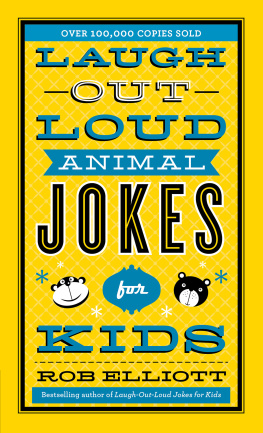TV Milestones
Series Editors
Barry Keith Grant
Brock University
Jeannette Sloniowski
Brock University
TV Milestones is part of the Contemporary Approaches to Film and Media Series.
A complete listing of the books in this series can be found online at .
General Editor
Barry Keith Grant
Brock University
Advisory Editors
Robert J. Burgoyne
University of St. Andrews
Caren J. Deming
University of Arizona
Patricia B. Erens
School of the Art Institute of Chicago
Peter X. Feng
University of Delaware
Lucy Fischer
University of Pittsburgh
Frances Gateward
California State University, Northridge
Tom Gunning
University of Chicago
Thomas Leitch
University of Delaware
Walter Metz
Southern Illinois University
ROWAN & MARTINS LAUGH-IN

Ken Feil
TV MILESTONES SERIES

Wayne State University Press
Detroit
2014 by Wayne State University Press,
Detroit, Michigan 48201. All rights reserved.
No part of this book may be reproduced without formal permission.
Manufactured in the United States of America.
Library of Congress Control Number: 2014931823
ISBN 978-0-8143-3822-3 (paperback); ISBN 978-0-8143-3823-0 (ebook)
For my parents, Naomi and Ed Feil, who introduced me to the world with love and laughter.
In memory of Alan Sues (19262011) and Billy Barnes (19272012).
ACKNOWLEDGMENTS
This little book is the product of a long journey, one that I could not have undertaken and completed without the support of so many friends, colleagues, and loved ones. First, many thanks to my editors Kristina Stonehill and Annie Martin, who got the ball rolling and patiently awaited my pitches (as well as socked it to me when my pace began to slack). I remain genuinely indebted to the extremely careful and perceptive advice offered by Wayne State University Presss anonymous readers and copyeditor M. Yvonne Ramsey. I am so grateful to Steven Allen Carr, Michael DeAngelis, Jenny DiBartolomeo, Michael Selig, Janet Staiger, and Jess Wilton; without your insights, inspiration and wit, this book and I would be as fragmented as a Laugh-In episode. Thanks also go to Miranda Banks, James Delaney, Peter Flynn, Eric Schaefer, Jane Shattuc, and the Visual and Media Arts Department at Emerson College for consistent encouragement and support. For their invaluable and unending help with research above and beyond looking things up in my Funk n Wagnalls, I am indebted to Robert Fleming and the research staff of Emerson Colleges Iwasaki Library and Comedy Archive and to Amanda Stow and John Waggener of the American Heritage Center archive at the University of Wyoming. As always, I tender my infinite gratitude and affection to Michael S. Keane, whose patient help with research combined with his enthusiasm, sense of humor, and jovial tolerance (three years with Laugh-In!) made this writing experience a true love-in; you ring my bell, as Big Al might say. Thanks, gratitude, and love also go to Stucka and Stoughton for leaving your paw prints on this project. Finally, I offer my heartfelt thanks to the creators and cast of Rowan and Martins Laugh-In for devising a program so rich and weird that, despite the fickle finger of fate, it continues to fascinate, amaze, and entertain.
The comedy-variety show Rowan and Martins Laugh-In (NBC, 196873) remains a woefully underrated innovator of commercial television in the United States during the late 1960s. Television histories commonly acknowledge Laugh-Ins contributions to video editing, ensemble comedy, political satire, and broadening network self-censorship policies, but the show remains overshadowed by both predecessors and successors: the anarchic, reflexive television comedy of Ernie Kovacs; the campy, Pop-influenced Batman (ABC, 196668); The Smothers Brothers Comedy Hour (CBS, 196769) and The Flip Wilson Show (NBC, 197074), two popular comedy-variety shows notable for their political significance; the taboo-breaking, socially conscious sitcom All in the Family (CBS, 197179); and the absurd, adult, politically incorrect, and quasi-underground sketch comedy show Saturday Night Live (NBC, 1975present). Contemporary scholarship on television comedy persistently underestimates the inventiveness and impact of Laugh-In (Marc 1998, 12425; Marc 1996, 157; Bodroghkozy 2001, 14951; Erickson 2000, 40; Staiger 2000a, 8687, 89, 98; Spigel 2008, 26870; Thompson 2011, 5).
When Laugh-In reigned as the highest-rated network program during its second and third seasons, audiences reportedly reveled in what appeared to be an utterly novel and unbelievably hip, campy, anti-Establishment assault on white-bread, middlebrow network television (Erickson 2000, 145; Staiger 2000a, 1213; Barthel 1971, 61). Commentators marveled over Laugh-Ins mockery of the tepid tastefulness, moral seriousness, and safe aesthetics of Lawrence Welk, the Cleavers, Ed Sullivan, and the like. The shows unifying appeal garnered further attention. Old and young, square and hip, hawk and dove, African-American and Anglo-American, straight and queer, and highbrow and lowbrow audiences watched Laugh-In, engaged in its derision, and chanted the shows suggestive catchphrases: Sock it to me, Look that up in your Funk n Wagnalls, and Here come the judge, among others. It appeared quite clear that Laugh-In had reached across the boundaries of age, taste, race, and class, for instance, when the New York Shakespeare Festivals 1968 production of Hamlet quoted the program and evoked its irreverence to taste and racial decorum, from African-American actor Cleavon Littles entrance as the sweet prince roaring Here come de judge to the audience screaming Sock it to em as Hamlet kills Laertes (Lahr 1968, D1).
Complementing Laugh-Ins newness, sophisticated style, brazen impertinence, and broad appeal, the shows greatest innovation (and ultimate put-on) might have been perfecting the pose of playful ambivalence and the strategy of deliberate ambiguity.Laugh-In presented prime-time audiences with the unprecedented means to enjoy countercultural, anti-Establishment transgression through the indulgence of bad taste and, reassuringly, conveyed the sense that the show represented the Establishments investment in containing such defiant delights.
In tandem with the shows rebellion against good taste, Elana Levine (2007, 11, 22) credits Laugh-In with instigating televisions construction of the new sexual culture. Laugh-In openly targeted youth culture and its part-time, middle-of-the-road adherents (Gans 1999, 123) by integrating sexually explicit content suggestively; the show could seem current and keep within the boundaries of acceptable TV content simultaneously (Levine 2007, 2123, 170). Laugh-Ins navigation of tastefulness seemingly upheld the limits imposed by NBC on the representation of sexuality as well as race, gender, and politics, even while the show regularly ridiculed censorship and good taste. The shows numerous rapidly edited segments gave abrupt and questionably tasteful glimpses of countercultural figures: sexual swingers (women and men), stoned hippies, empowered African Americans, feminists, and flamboyant nellie men. Related to these icons,
Next page
